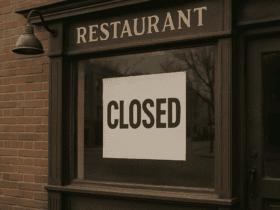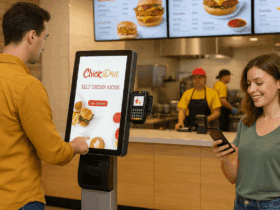In the fiercely competitive landscape of the culinary industry, restaurant owners are tasked with not just delivering exceptional dining experiences but also mastering the art of visibility. Crafting a well-structured restaurant marketing budget is not merely an administrative chore; it’s a strategic blueprint that defines the path to your restaurant’s success. This budget serves as your financial compass, guiding every promotional effort, from mouth-watering social media posts to the most compelling local events. It outlines how much your company has to spend on marketing costs and how it plans on spending that money, ensuring every dollar contributes to attracting more patrons and enhancing your brand’s presence.
Whether you’re a cozy local diner or a high-end gourmet establishment, understanding and optimizing your marketing budget is pivotal. In this dynamic era where consumer preferences shift rapidly, being equipped with a robust marketing strategy can be the difference between a full house and empty tables. The question of why a restaurant might prefer to set a daily budget vs a monthly budget is pivotal, impacting not just cash flow but also marketing agility. Furthermore, comprehending factors like the average restaurant marketing budget and how much restaurants spend on advertising can provide valuable benchmarks for your own financial planning. Let’s dive into the five best ways to create your restaurant marketing budget, ensuring every penny is a step towards culinary acclaim.
Following are The Five Best Ways to Create Your Restaurant Marketing Budget
1. Understand Your Financial Baseline

Before allocating any funds to marketing, it’s crucial to grasp your restaurant’s overall financial health. Scrutinize your revenue streams, fixed and variable costs, and profit margins. An average restaurant marketing budget typically ranges between 3% to 6% of the total revenue, but this figure can vary based on your restaurant’s size, location, and growth phase. Assessing how much restaurants generally spend on advertising in your niche can also offer insights. Remember, your marketing budget is an investment in your restaurant’s future; hence, it should be proportional to your financial capacity and growth aspirations.
Must Read: 5 Benefits of Social Media Marketing For Restaurants
2. Set Clear Marketing Objectives

Each dollar in your marketing budget should aim towards specific, measurable goals. Whether it’s increasing foot traffic, boosting online reservations, or enhancing brand awareness, your objectives will dictate how you allocate your funds. Decide whether a daily budget or a monthly budget aligns best with your goals. A daily budget allows for more immediate adjustments based on campaign performance, making it ideal for time-sensitive promotions or when testing new marketing channels. In contrast, a monthly budget can foster a more strategic, long-term approach, suitable for sustained brand-building efforts.
3. Dive Deep into Market Research

Understanding your target market is the cornerstone of effective marketing. Conducting thorough market research within a typical radius for a restaurant, usually around 3 to 5 miles, can unveil invaluable insights about your potential customers. Identify their dining preferences, spending habits, and how they engage with restaurants like yours. This information will not only refine your marketing messages but also help in pinpointing the most lucrative marketing channels for your target audience.
4. Allocate Wisely Across Channels

With your goals set and market research in hand, distribute your budget across different marketing channels. The mix can include digital marketing (social media, email campaigns, SEO), traditional advertising (flyers, local newspapers, radio spots), and community engagement (local events, sponsorships). Be mindful of the marketing budget for the restaurant industry standards but tailor your allocation to what works best for your establishment and audience. Tracking the ROI of each channel is crucial; it’s not just about how much you spend, but how effectively you spend it.
Must Read: Tools To Run Email Marketing Campaigns For Repeat Orders
5. Monitor, Measure, and Adjust

A static marketing budget is a missed opportunity. Implement a system to regularly monitor your marketing efforts and measure them against your set objectives. Utilize analytics to understand which strategies are yielding results and which aren’t. Be prepared to reallocate funds from underperforming areas to more lucrative ones. This dynamic approach ensures your marketing budget is not just a static number but a pulsating, responsive asset driving your restaurant’s growth.
Conclusion:
Crafting an effective restaurant marketing budget is a blend of art and science. It requires a deep understanding of your financial capacity, clear marketing objectives, insightful market research, strategic allocation of funds, and a relentless commitment to monitoring and optimization. By embracing these principles, restaurant owners can ensure that their marketing budget is not merely an expense but a potent tool in their quest for culinary success and business excellence. So, embark on this journey with a calculated strategy, and watch as your restaurant transforms from a hidden gem to the talk of the town.
Must Read: A Definitive Guide to Calculate the Restaurant Revenue and Profit










Leave a Reply